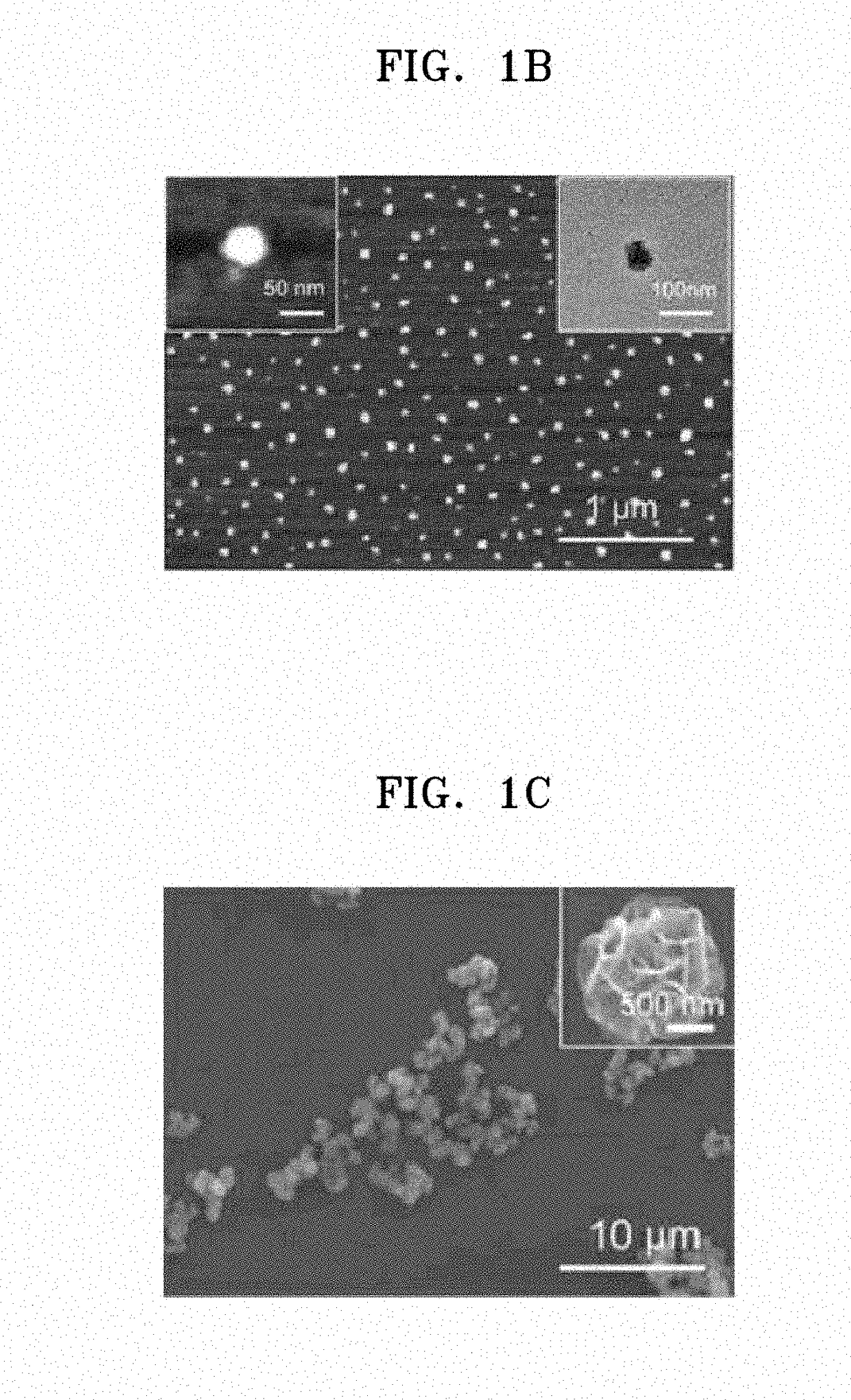Self-assembled ribonucleoprotein nanoparticles
- Summary
- Abstract
- Description
- Claims
- Application Information
AI Technical Summary
Benefits of technology
Problems solved by technology
Method used
Image
Examples
example 1
on and Characterization of Poly-RNP
[0062](1) Expression and Purification of Cas9
[0063]In order to obtain Cas9 protein which is a component of polymeric RNP, pET-NLS-Cas9-6xHis was purchased from Addgene (plasmid #62934, USA) and purified as previously described. Briefly, pET-NLS-Cas9-6xHis was transformed into Rosetta™ 2 (DE3)pLysS competent cells (Novagen, USA). The resulting single colony was grown in Luria-Bertani (LB) media and 5 mL of a culture were inoculated into 1 L of LB in the presence of 100 μg / mL ampicillin and 50 μg / mL chloramphenicol at 37° C., followed by incubation. NLS-Cas9 protein was induced with 1 mM of isopropyl-D-1-thiogalactopyranoside at 18° C. for 16 hrs to 18 hrs. Pellets were harvested, resuspended in buffer A (50 mM Tris(hydroxymethyl)aminomethane hydrochloride (Tris-HCl), pH 8.0, 1 M NaCl, 20% glycerol, 20 mM imidazole and 2 mM Tris(2-carboxyethyl)phosphine (TCEP, Sigma-Aldrich, USA), and lysed by sonication. After centrifugation at 8,000 g for 40 min at...
example 2
ular Activity of Poly-RNP Nanoparticles
[0083]In order to compare efficiency of the intracellular activity of poly-RNP nanoparticles with that of the known mono-RNP system, the following Example was performed.
[0084](1) Intracellular Transfection of Poly-RNP
[0085]To enhance the cellular uptake of the poly-RNP nanoparticles, the particles were formulated with cationic lipid-based agent, Stemfect, prior to transfection. Owing to the high negative charge density of the RNA-based particles, the cationic lipid was readily adsorbed onto the particles by electrostatic interaction. As a result, the change of particle surface charge (zeta potential) from −12 mV (RNP nanoparticles) to +29 mV (RNP / cationic-lipid particles) was induced, as shown in FIG. 2A, indicating the successful assembly of poly-RNP nanoparticle with the cationic lipid. The size of particles after complexation with Stemfect shows approximately 80 nm, as shown in FIG. 2B.
[0086]HeLa and HeLa / GFP cells were cultured in DMEM cont...
example 3
ctivity of Poly-RNP Nanoparticles
[0106]Having demonstrated that the poly-CRISPR / Cas9 system can provide enhanced knock-out of the target gene in cellular experiments, it was examined whether this polymeric fabrication of CRISPR / Cas9 is also effective to suppress expression of the target phenotype based on the gene disruption in an in vivo environment.
[0107](1) Injection of RNP-Nanoparticles into Animals and Imaging Thereof
[0108]Four weeks-old BALB / c male nude mice were used for animal experiment after purchasing them from RaonBio (Korea). The body weight of mice was 20 g to 22 g. All mice were treated with standard laboratory conditions. All animal experiments were carried out in accordance with institutional guidelines for animal care and use and approved by the institutional committee for animal experiments in KIST (2016-01-022).
[0109]A suspension of the HeLa / GFP cells (5×106) was injected subcutaneously into dorsal side of Balb / c nude mice. At 2 weeks post injection, the tumor-be...
PUM
| Property | Measurement | Unit |
|---|---|---|
| Diameter | aaaaa | aaaaa |
| Diameter | aaaaa | aaaaa |
| Diameter | aaaaa | aaaaa |
Abstract
Description
Claims
Application Information
 Login to View More
Login to View More - R&D
- Intellectual Property
- Life Sciences
- Materials
- Tech Scout
- Unparalleled Data Quality
- Higher Quality Content
- 60% Fewer Hallucinations
Browse by: Latest US Patents, China's latest patents, Technical Efficacy Thesaurus, Application Domain, Technology Topic, Popular Technical Reports.
© 2025 PatSnap. All rights reserved.Legal|Privacy policy|Modern Slavery Act Transparency Statement|Sitemap|About US| Contact US: help@patsnap.com



